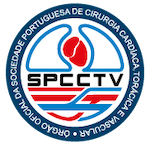The Use of Radiomic Analysis in Cardiovascular Diseases
DOI:
https://doi.org/10.48729/pjctvs.286Keywords:
cardiovascular disease, aortic disease, radiomicsAbstract
A The recent years of the cardiovascular medicine saw a rapid development of advanced imaging modalities. The new era of personalized medicine takes advantage of what can be interpreted from medical images, searching for underlying connections between image phenotyping and biological characteristics to support precise clinical decisions. The application of radiomics in cardiovascular imaging has lagged behind other fields, such as oncology. While the current interpretation of cardiac and vascular images mainly depends on subjective and qualitative analysis, radiomics uses advanced image analysis to extract numerous quantitative features from digital images that are unrecognizable to the naked eye. The goal of this narrative review is to highlight the main findings of the recent use of radiomic analysis in the cardiovascular field. English-language articles published in the database PubMed were used for this review. The keywords used in the search included radiomics, cardiovascular or cardiac or aortic. Radiomics is expected to contribute to a more precise phenotyping of the cardiovascular disease, which can improve diagnostic, prognostic, and therapeutic decision making in the near future.
Downloads
References
Lambin P, Rios-Velazquez E, Leijenaar R, Carvalho S, van Stiphout RG, Granton P, et al. Radiomics: extracting more information from medical images using advanced feature analysis. Eur J Cancer 2012; 48(4):441-6.
van Timmeren JE, Cester D, Tanadini-Lang S, Alkadhi H, Baessler B. Radiomics in medical imaging-"how-to" guide and critical reflection. Insights Imaging 2020; 11(1):91.
Mayerhoefer ME, Materka A, Langs G, Haggstrom I, Szczypinski P, Gibbs P, et al. Introduction to Radiomics. J Nucl Med 2020; 61(4):488-95.
Wang JC, Fu R, Tao XW, Mao YF, Wang F, Zhang ZC, et al. A radiomics-based model on non-contrast CT for predicting cirrhosis: make the most of image data. Biomark Res 2020; 8(47.
SunW,LiuS,GuoJ,LiuS,HaoD,HouF,etal.ACT- based radiomics nomogram for distinguishing between benign and malignant bone tumours. Cancer Imaging 2021; 21(1):20.
Gillies RJ, Kinahan PE, Hricak H. Radiomics: Images Are More than Pictures, They Are Data. Radiology 2016; 278(2):563-77.
Abbasian Ardakani A, Bureau NJ, Ciaccio EJ, Acharya UR. Interpretation of radiomics features - A pictorial review. Comput Methods Programs Biomed 2022; 215(106609.
Parekh V, Jacobs MA. Radiomics: a new application from established techniques. Expert Rev Precis Med Drug Dev 2016; 1(2):207-26.
van Griethuysen JJM, Fedorov A, Parmar C, Hosny A, Aucoin N, Narayan V, et al. Computational Radiomics System to Decode the Radiographic Phenotype. Cancer Res 2017; 77(21):e104-e7.
Scapicchio C, Gabelloni M, Barucci A, Cioni D, Saba L, Neri E. A deep look into radiomics. Radiol Med 2021; 126(10):1296-311.
DingN, HaoY, WangZ, XuanX, KongL, XueH, et al. CT texture analysis predicts abdominal aortic aneurysm post-endovascular aortic aneurysm repair progression. Sci Rep 2020; 10(1):12268.
Charalambous S, Klontzas ME, Kontopodis N, Ioannou CV, Perisinakis K, Maris TG, et al. Radiomics and machine learning to predict aggressive type 2 endoleaks after endovascular aneurysm repair: a proof of concept. Acta Radiol 2021; 2841851211032443.
GuoY,ChenX,LinX,ChenL,ShuJ,PangP,etal. Non-contrast CT-based radiomic signature for screening thoracic aortic dissections: a multicenter study. Eur Radiol 2021; 31(9):7067-76.
ZhouZ, YangJ, WangS, LiW, XieL, LiY, et al. The diagnostic value of a non-contrast computed tomography scan-based radiomics model for acute aortic dissection. Medicine (Baltimore) 2021; 100(22):e26212.
Rossi G, Barabino E, Fedeli A, Ficarra G, Coco S, Russo A, et al. Radiomic Detection of EGFR Mutations in NSCLC. Cancer Res 2021; 81(3):724-31.
Zhou M, Leung A, Echegaray S, Gentles A, Shrager JB, Jensen KC, et al. Non-Small Cell Lung Cancer Radiogenomics Map Identifies Relationships between Molecular and Imaging Phenotypes with Prognostic Implications. Radiology 2018; 286(1):307-15.
Li Y, Eresen A, Lu Y, Yang J, Shangguan J, Velichko Y, et al. Radiomics signature for the preoperative assessment of stage in advanced colon cancer. Am J Cancer Res 2019; 9(7):1429-38.
WangY, LiuW, YuY, LiuJJ, XueHD, QiYF, et al. CT radiomics nomogram for the preoperative prediction of lymph node metastasis in gastric cancer. Eur Radiol 2020; 30(2):976-86.
Fh T, Cyw C, Eyw C. Radiomics AI prediction for head and neck squamous cell carcinoma (HNSCC) prognosis and recurrence with target volume approach. BJR Open 2021; 3(1):20200073.
Oikonomou EK, Siddique M, Antoniades C. Artificial intelligence in medical imaging: A radiomic guide to precision phenotyping of cardiovascular disease. Cardiovasc Res 2020; 116(13):2040-54.
Cheng K, Lin A, Yuvaraj J, Nicholls SJ, Wong DTL. Cardiac Computed Tomography Radiomics for the Non-Invasive Assessment of Coronary Inflammation. Cells 2021; 10(4):
Ayachy RG, Nicolas. Giraud, Paul. Durdux, Catherine. Giraud, Philippe. Burgun, Anita. Bibault, Jean Emmanuel. The Role of Radiomics in Lung Cancer: From Screening to Treatment and Follow-Up. Front Oncol 2021; 11
Kolossvary M, Kellermayer M, Merkely B, Maurovich-Horvat P. Cardiac Computed Tomography Radiomics: A Comprehensive Review on Radiomic Techniques. J Thorac Imaging 2018; 33(1):26-34.
Lin A, Kolossvary M, Yuvaraj J, Cadet S, McElhinney PA, Jiang C, et al. Myocardial Infarction Associates With a Distinct Pericoronary Adipose Tissue Radiomic Phenotype: A Prospective Case-Control Study. JACC Cardiovasc Imaging 2020; 13(11):2371-83.
Shafiq-Ul-Hassan M, Zhang GG, Latifi K, Ullah G, Hunt DC, Balagurunathan Y, et al. Intrinsic dependencies of CT radiomic features on voxel size and number of gray levels. Med Phys 2017; 44(3):1050-62.
Xu P, Xue Y, Schoepf UJ, Varga-Szemes A, Griffith J, Yacoub B, et al. Radiomics: The Next Frontier of Cardiac Computed Tomography. Circ Cardiovasc Imaging 2021; 14(3):e011747.
Ponsiglione A, Stanzione A, Cuocolo R, Ascione R, Gambardella M, De Giorgi M, et al. Cardiac CT and MRI radiomics: systematic review of the literature and radiomics quality score assessment. Eur Radiol 2022; 32(4):2629-38.
Downloads
Published
How to Cite
License
Copyright (c) 2022 Portuguese Journal of Cardiac Thoracic and Vascular Surgery

This work is licensed under a Creative Commons Attribution 4.0 International License.





